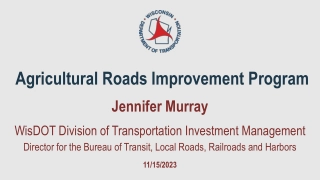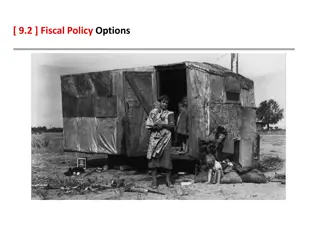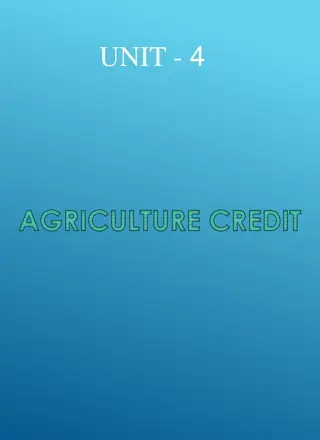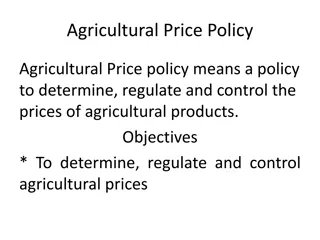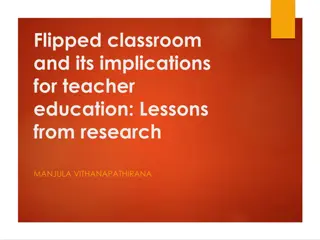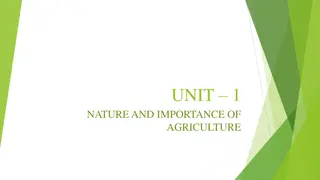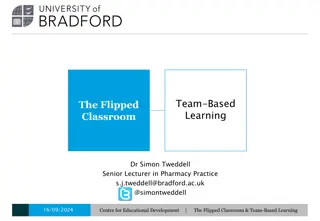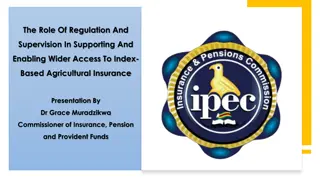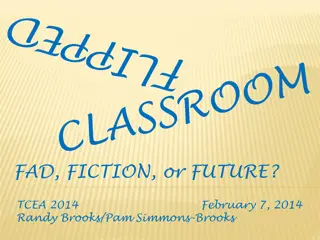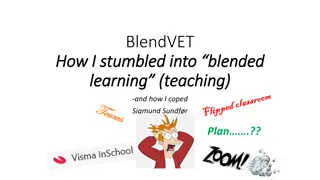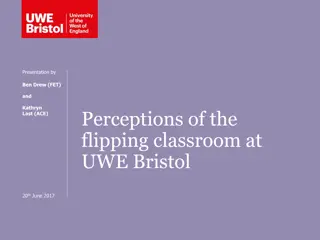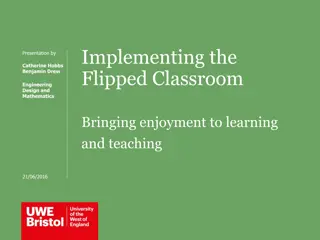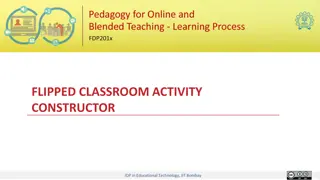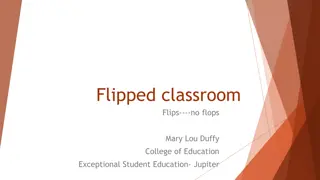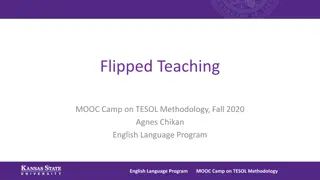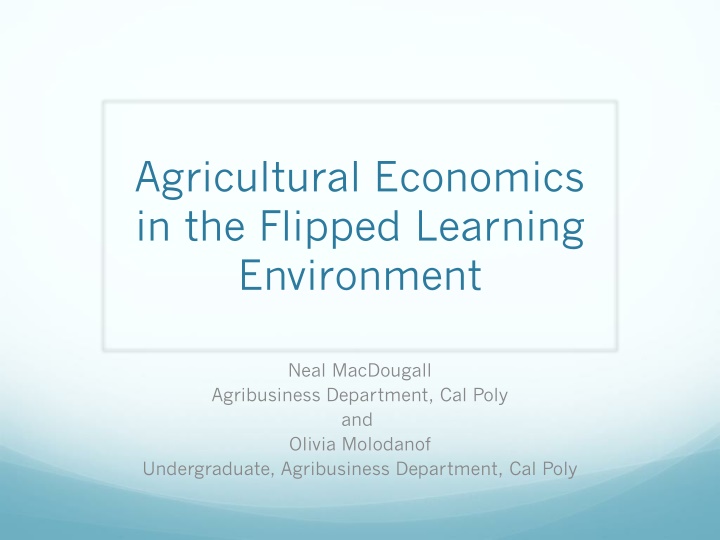
Enhancing Agricultural Economics Education Through Flipped Learning
Explore the transformation of agricultural economics education through a flipped learning approach, focusing on student feedback, updated class structures, and improved learning outcomes. Discover how pre-class preparation, in-class assessments, and peer teaching contribute to a more engaging and effective learning environment.
Download Presentation

Please find below an Image/Link to download the presentation.
The content on the website is provided AS IS for your information and personal use only. It may not be sold, licensed, or shared on other websites without obtaining consent from the author. If you encounter any issues during the download, it is possible that the publisher has removed the file from their server.
You are allowed to download the files provided on this website for personal or commercial use, subject to the condition that they are used lawfully. All files are the property of their respective owners.
The content on the website is provided AS IS for your information and personal use only. It may not be sold, licensed, or shared on other websites without obtaining consent from the author.
E N D
Presentation Transcript
Agricultural Economics in the Flipped Learning Environment Neal MacDougall Agribusiness Department, Cal Poly and Olivia Molodanof Undergraduate, Agribusiness Department, Cal Poly
Concept Test Before we start, did you do your Concept Test? Link to Socrative: beta.socrative.com Room: BlissAGB (all one word, caps unimportant)
The Standard Lecture Class Structure Assessment Lecture Chapter Reading
How Do Students Feel? Student #13: I have gone through school spitting back what the teacher taught us but feeling like I never truly grasped the material enough to remember it past when I needed to .
Design Response Objectives More frequent and tighter feedback Clearer determination of who knows how much/Better formative assessment Increase formal level of peer teaching and learning
New Overall Class Structure Pre-Class Preparation Introduction Reading Self-Assessment JiTT Exercise In-Class Concept Test Group Work Targeted Lecture
Pre-Class Preparation Structure Module Introduction Chapter Reading Self-Assessment JiTT Exercise
How Do Students Feel? Student #14: The videos provided insight into the mind of the teacher and how to work through problems without overthinking them. They also allowed students to go back and review the material prior to the exam. The JITTs, while frustrating at times, also provided insight into the chapters by forcing us to think on our own as to how what we were learning applied to our world, by working through written and hypothetical problems.
In-Class Structure In-Class Concept Test (Individual/Group ) Pre-Class JiTT Exercise In-Class Group Work In-Class Targeted Lecture
How Do Students Feel? Student #18: Most classes I've been in do not have very many, if any, group projects or peer-teaching activities as this class does. Learning from other people in your class can be very helpful, because they can help you understand the material that you don't know and you could help explain the things that you may understand that they don't. Other people can see things differently, so being able to see how other students in class look at the subject can help you learn. Having all the in class discussions are always useful, but having the videos online helped reinforce a lot of what we talked about in class.
When are videos watched? (cont d)
How Do Students Feel? Student #19: I have to say though that most of my classes have only tested on concepts, knowing formulas, where to put numbers, knowing definitions of terms, that sort of thing. This is the first that put such a heavy emphasis on the why factor. But because we had to learn the why I feel like this material will stick in my head a little longer. Maybe not all the terms and demand or supply shifters, but an underlying knowledge of how markets work.
How Do Students Feel? (cont d) Student #22: This class itself has taught me a lot in preparing for the future. To be honest, I did not get the best grade in this class. I did not get the grade that I wanted and I am not upset about that at all. I got much more out of this class than a grade, I learned about how important it is to truly understand something than to just memorize a formula. This class was difficult, because it challenged me to think outside of just the classroom. This class was real life; it taught me that what I have to do to really understand something and the process I have to go through to understand things.
Next Steps/Questions? Now this is not the end. It is not even the beginning of the end. But it is, perhaps, the end of the beginning. Winston Churchill November 20, 1942


